Affiliate links on Android Authority may earn us a commission. Learn more.
What's the best fitness tracker of 2025? I've tested more than I can count and this is my top pick
Published onApril 22, 2025
Though the line between smartwatch and fitness tracker continues to blur, there are still some devices that, first and foremost, deliver a dedicated wellness experience. Whether a band, a watch, or even a ring, these fitness trackers help users focus on building better habits, keeping tabs on their health, and generally staying active. As Android Authority‘s tenured wearables expert, I’ve tested countless trackers for years now, pushing the limits of sensors, features, batteries, and builds. Below are the top devices I would recommend to anyone looking for the best fitness tracker available.
Fitbit Charge 6: The best fitness tracker overall (band-style)


- Useful physical button
- Updated heart rate sensor
- All sport modes now on device
- Google app integration
- Built-in GPS unreliable
- Iterative changes compared to last year
- Heart rate broadcasting limited
- No altimeter
The best band-style fitness tracker comes from one of the oldest players in the game, Fitbit. Though now acquired by Google, the platform still offers fantastic wellness tracking and a user-friendly companion app. The Fitbit Charge 6 offers key upgrades to the fan-favorite Charge line. Most importantly, I have found the lightweight tracker extremely comfortable for workouts and sleep, and I love the colorful AMOLED display for reading stats. The latest model reintroduced a physical button to streamline device interaction, which makes navigation much easier during exercise and on the go.
Internally, the Charge 6 provides all the basics, including step and activity tracking, sleep tracking, ECG support, skin temperature tracking, SpO2 monitoring, and the option to take EDA scans. It also supports Fitbit’s Readiness and Stress Management scores. Plus, the tracker boasts improved heart rate tracking for more accurate stats than ever, thanks to improved machine learning algorithms. I was generally very impressed with the sensor’s performance during my review period. Unfortunately, the tracker suffers from some major drawbacks regarding GPS performance. This makes it hard to recommend for long-distance training, but it’s a great pick for basic activity tracking. It also works seamlessly with both Android phones and iPhones, making it approachable for all shoppers.
Meanwhile, in light of recent changes to the Fitbit stable, the Charge 6 is also one of the few Fitbit-branded devices left. It doesn’t pack all the same smart features shoppers used to find on the brand’s smartwatches, but it does offer useful integration with Google Wallet, Google Maps, and YouTube Music. If you are interested in a full-out smartwatch experience with similar fitness tracking capabilities, the Google Pixel Watch 3 ($349.99 at Amazon) is a great device and very capable fitness tracker, albeit at a much higher price point. The Pixel Watch 3 features more reliable built-in GPS than the Charge 6, but notably, the watch is only compatible with Android phones. The budget-friendly Fitbit Inspire 3 ($99.95 at Amazon) also offers a reliable experience at a lower price point, but no built-in GPS.
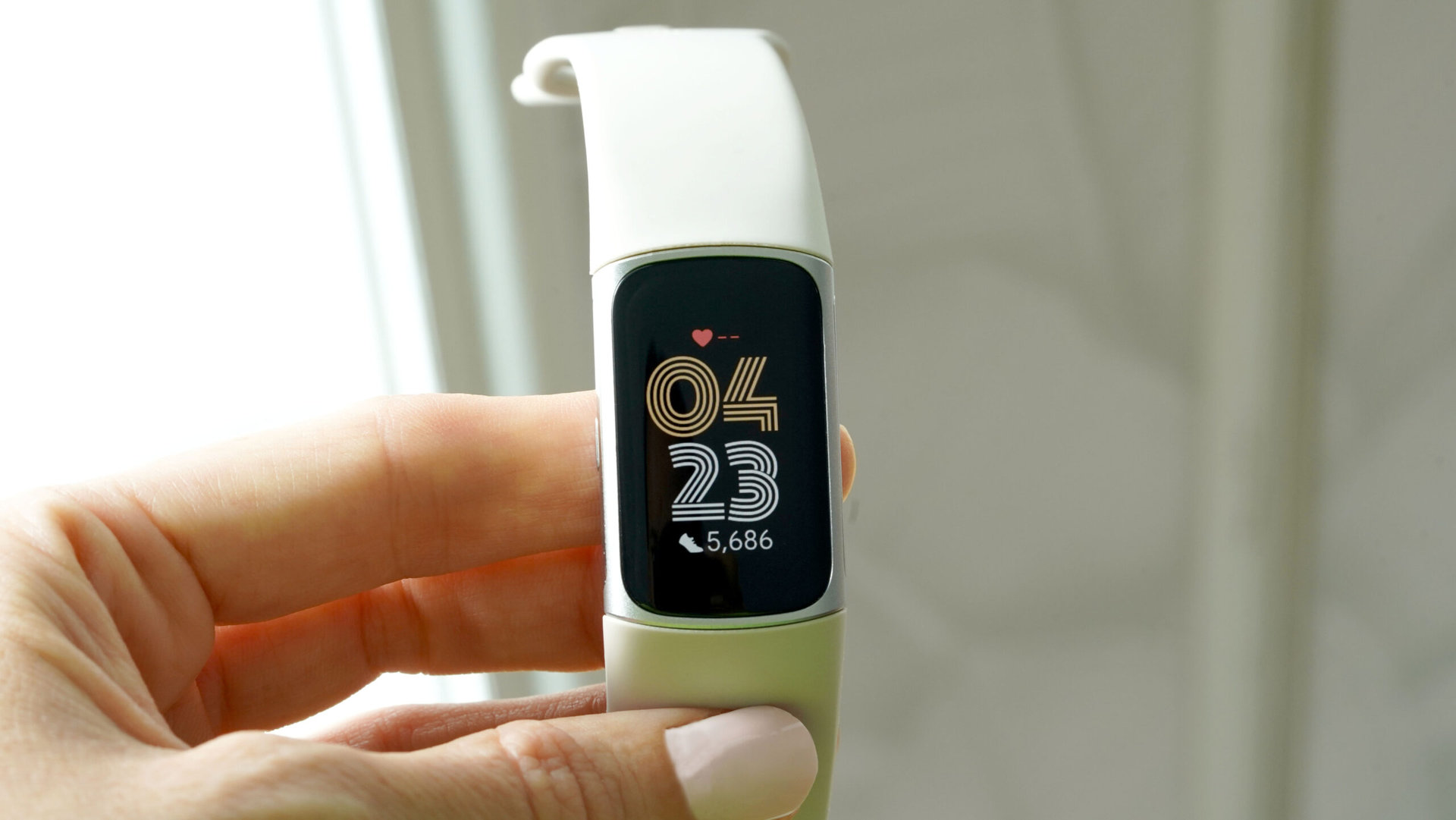
Garmin Venu 3: The best smartwatch for fitness tracking
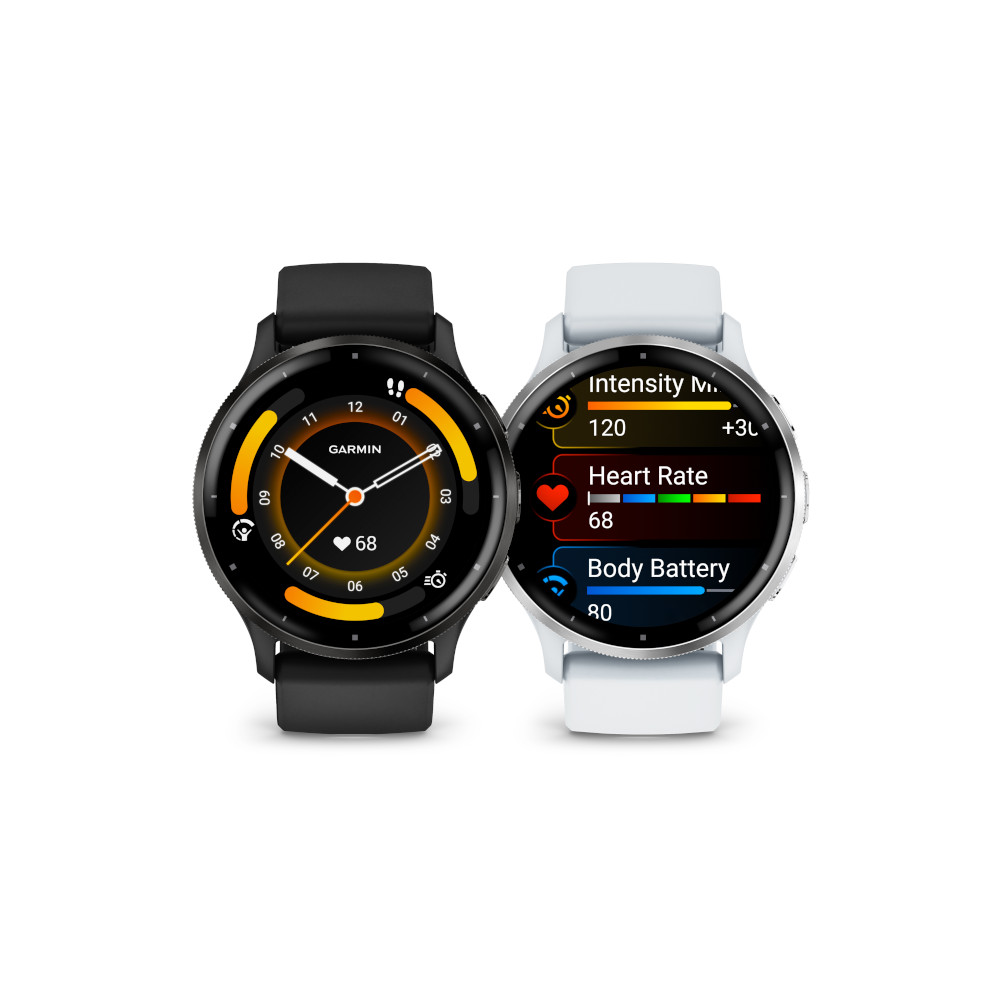

- Highly accurate GPS and heart rate sensors
- Automatic nap detection and sleep coaching
- On-device phone call and voice assistant support
- Up to 14-day battery life
- Larger display
- Pricey compared to competitors
- No LTE model
- Limited third-party app support
The Garmin Venu 3 might be Garmin’s premium smartwatch, but it’s also one of the best fitness trackers available. The device features highly reliable multi-band GNSS and the company’s Gen 5 Elevate optical heart rate sensor (which performed extremely well during my review). It also boasts Garmin’s top training tools, including Body Battery, Recovery Time, Workout Benefit, Perceived Exertion, and Garmin Coach, plus detailed sleep tracking and automatic nap detection. I loved the sleep-tracking accuracy and how Garmin integrates rest-related stats into broader insights. In addition to tracking tons of sport modes and advanced workout metrics, the watch also offers Garmin’s Health Snapshot feature and an FDA-approved ECG app for on-demand readings and monitoring signs of AFib. The Venu 3 is pricey, but it also brings key smartwatch features to the table, such as mobile payments, voice calling, and voice assistant support. The device is also available in two case sizes so users can find the perfect fit for their wrists.
Apple Watch Series 10: The best fitness tracker for iPhone users


- Increased display size
- Thinner, sleeker build
- FDA-approved sleep apnea detection
- Useful watchOS 11 updates and additions
- Faster charging
- Same 18-24 hour battery life
- No SpO2 measurements disabled in US
- Vitals app somewhat simplified
For iPhone users, I would be remiss not to recommend the Apple Watch Series 10 as a top fitness tracker. In fact, it’s the best wearable you can buy if you’re tied into Apple’s ecosystem. From apps to notifications, integration with the iPhone is seamless, and users will find every smart feature, from on-wrist phone calls to offline music playback for soundtracking your next gym workout. The device accurately tracks all the basics, including steps, calories, distance, floors climbed, resting and active heart rate, sleep, VO2 max, blood oxygen saturation, temperature, and more. It also delivers nearly flawless GPS tracking. Thanks to watchOS 11, the Series 10 is the most powerful workout companion yet out of Cupertino and offers a more personalized health and fitness tracking experience than ever before.
Garmin Forerunner 265: The best fitness tracker for dedicated runners
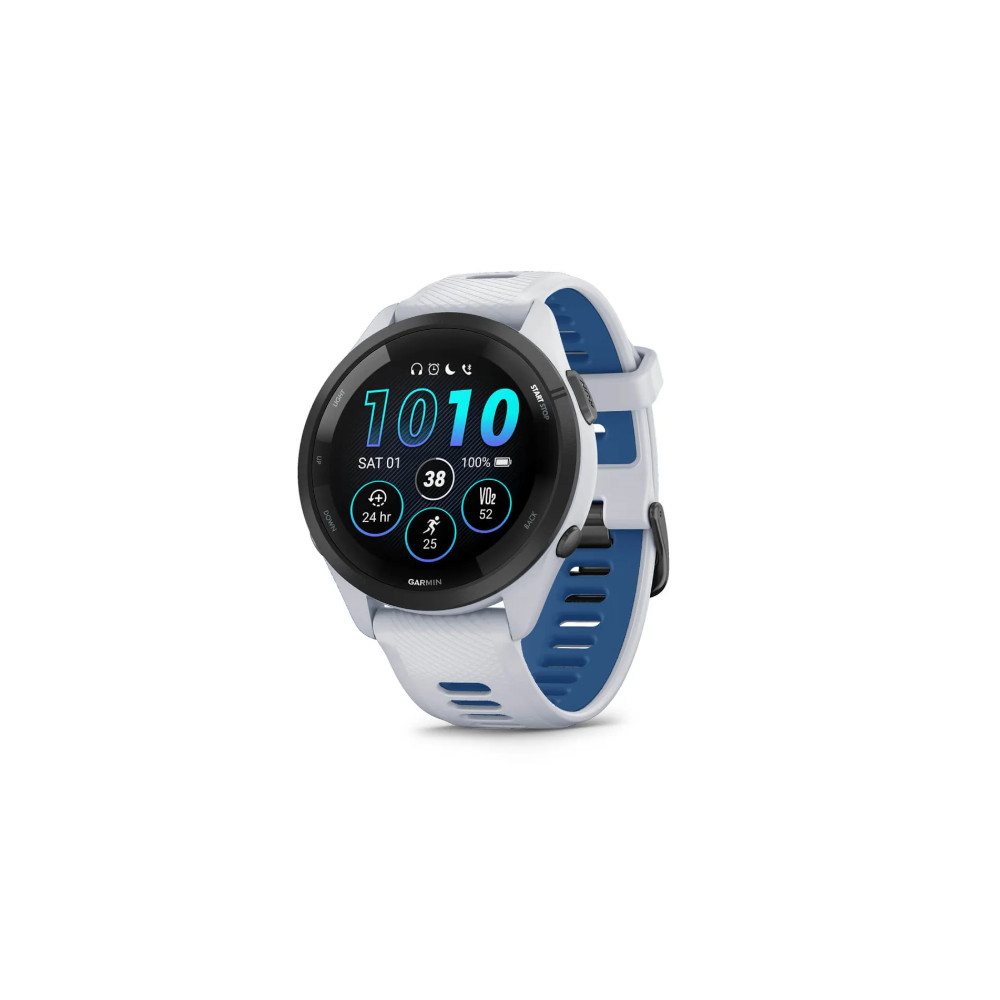

- Beautiful AMOLED touchscreen display
- Multiples sizes with music storage standard
- Accurate heart tracking
- Reliable GPS with SatIQ
- Training Readiness is great
- Limited hardware upgrades
- More expensive than the Forerunner 255
The Garmin Forerunner 265 is easily one of the most impressive running watches I’ve ever used and a welcome upgrade to its already powerful predecessor. The most apparent improvement on this model is its OLED touchscreen display. It’s bright, responsive, and paired with a colorful UI refresh. I also applaud Garmin’s decision to offer the watch in two sizes, a 265 and 265S, with the same retail price. Both sizes feature music storage and multi-day battery life. On the smaller model, I regularly hit around four days of usage with the always-on display enabled. In smartwatch mode, the device can last about two weeks. I also clocked highly reliable stats throughout my review period, including heart rate data, sleep tracking, and, of course, GPS tracking. The price of the Forerunner 265 did jump considerably compared to its predecessor, inching the device out of “affordable” territory, however, $449 is reasonable considering the features you’ll find on board.
Garmin vivomove Sport: The best hybrid watch for fitness tracking
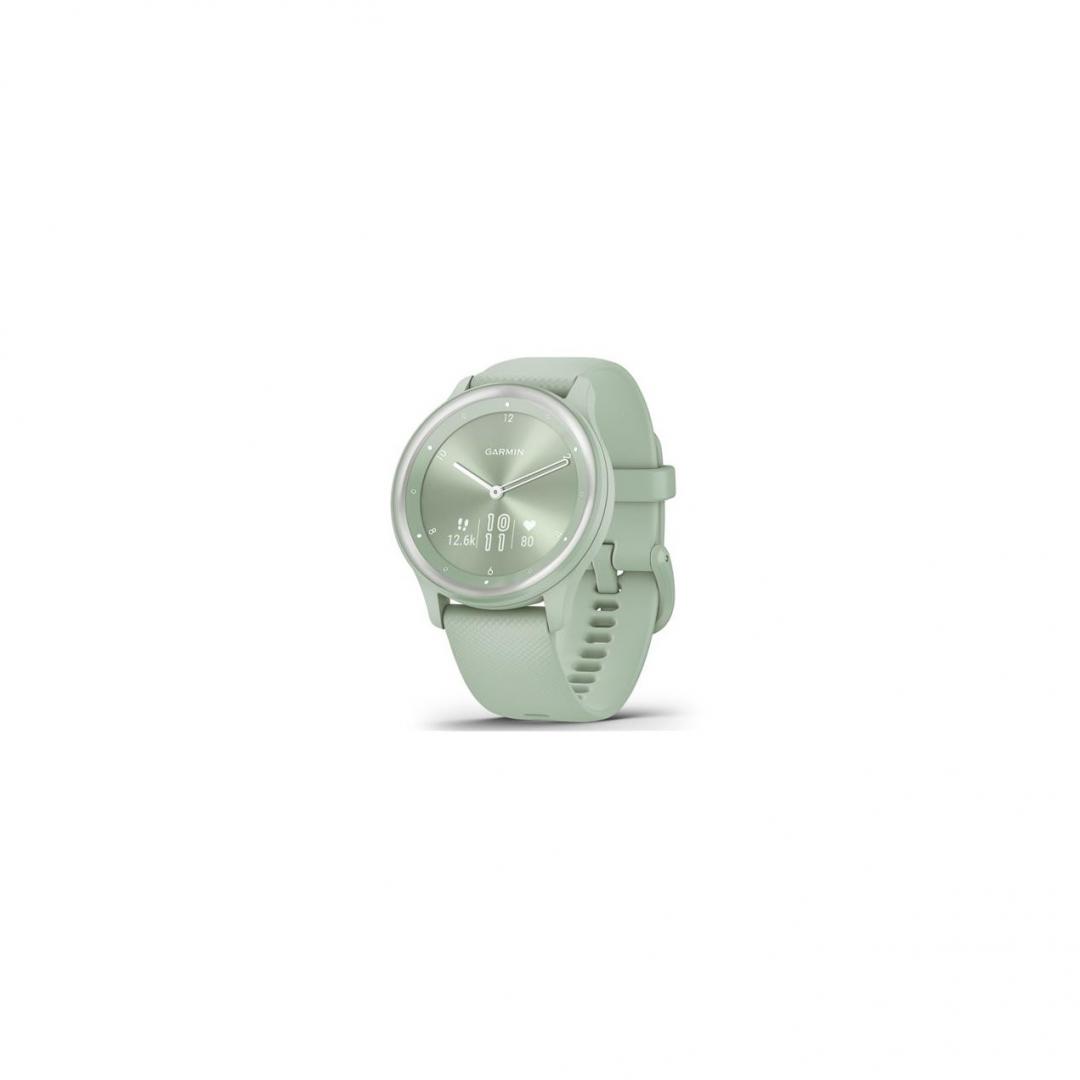

- Sleek hidden display
- Elevated sports aesthetic
- Convenient multi-day battery life
- No built-in GPS
- Limited smartwatch features
- No on-board music storage
Like everything from Garmin, the vivomove Sport offers the full gamut of fitness tracking, but where it stands out is how it houses them. During my Garmin vivomove Sport review, I fell in love with the device’s form factor, particularly its spy-tech “hidden” display. With real ticking hands, this hybrid watch feels like a classic analog accessory. The aesthetic is completely appropriate for a fancy meal or a night out. Meanwhile, it hides an accurate fitness tracker with some of Garmin’s top tools just a double-tap away. The device records all the basics you’d expect from a tracker, plus sleep data, 24/7 heart rate, and stress data. It also offers Garmin’s Body Battery and all-day stress monitoring. Unfortunately, you won’t find a sleep score or built-in GPS here. Meanwhile, metallic accents elevate the device, while comfortable silicone bands make it durable for a sweaty workout. My tests showed around five days of battery life for the hybrid features, and then the watch would go into an analog-only mode, which allows you to continue using the device as a standard watch for about one more day.
Oura Ring 4: The best smart ring for fitness tracking


- Flatter sensor bumps
- Titanium inner layer
- Long list of metrics tracked
- Excellent software experience
- Bulky, thick design
- Still scratches easily
- Not fully coated on some colorways
- Oura membership needed for most features
The Oura Ring 4 may be the smallest device on this list, but despite its tiny stature, the comfortable smart ring manages to fit in impressive, accurate sensors to provide wellness tracking without distraction. The heart rate monitoring on the Oura Ring 4 is especially important as the company uses unique algorithms to offer more holistic health monitoring, rather than specific activity tracking. More than any other tracker, it adapts to each user the longer it is used, identifying trends and offering actionable insights. I find Oura especially successful in tracking and distilling sleep data, which makes sense as the company originally started as a sleep tracker. The Oura Ring 4 also boasts a reliable temperature sensor for women’s health tracking, including pregnancy tracking, and offers improved workout tracking as well. Meanwhile, the Oura app experience is fantastically well-designed and robust. The device is also compatible with iPhones and Android phones, offering users from both camps a solid screen-free option.
Xiaomi Smart Band 9: The best budget-friendly fitness tracker


- Budget-friendly price
- Petite form factor
- Fantastic battery life
- No onboard GPS
- Limited smart features
- Companion app needs work
For anyone on a budget, Xiaomi’s fitness tracking bands deliver all the basics, including hard hitters like SpO2 monitoring and accurate heart rate tracking, VO2 max, sleep, stress, and workout tracking for more than 150 activity types. The latest model, the Xiaomi Smart Band 9, delivers the same reliable experience I’ve found in the past, with a few upgrades. It offers a more elevated look with a slightly slimmer metallic body, a brighter AMOLED display, and new strap options, including accessories for off-wrist wear. I personally don’t enjoy wearing the device as a necklace or clipped to a shoe, but it’s nice to have options. The battery life on the newest model is also fantastic, offering up to 21 days of use between charges, depending on which settings you enable. I’ve landed at a little over a week of battery while using the tracker pretty heavily. My only regret is that Xiaomi still hasn’t added built-in GPS to the lineup, so you need to lug your phone on runs and rides if you want to track your routes. Still, at this price point, that’s a fair sacrifice to make. If you really need it, though, Xiaomi has the GPS-ready Smart Band 9 Pro ($79.99 at Amazon) for a little bit extra.
Why you should trust me
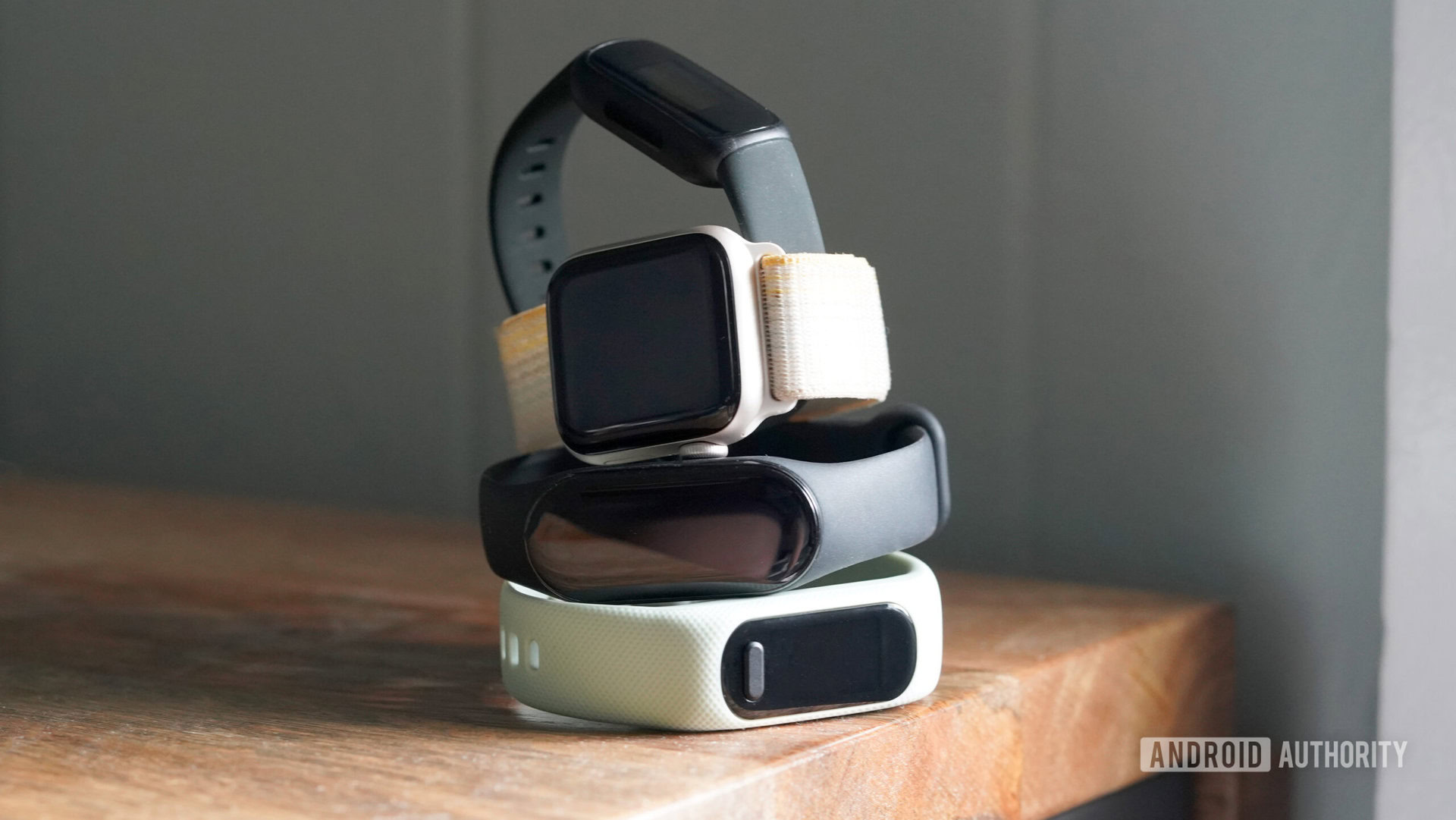
I’ve been professionally testing and reviewing wearables for years, dating back to before Samsung teamed up with Google for the Wear OS we now know and love and before Apple launched its first-generation, massive Ultra. I’ve reviewed dozens of smartwatches, fitness trackers, dedicated heart rate monitors, smart rings, sleep trackers, exercise equipment, and health and fitness apps and platforms. In other words, I’ve sweated my way through a ton of products to learn what makes them valuable and what features matter most.
At the start of every review, my focus is twofold: user experience and value. First, I approach each product as a typical user, noting everything from comfort and design to performance and features. I fire off texts, download apps, and tap into everything from timers to gesture controls. To dig even deeper, I bring expertise and comparable metrics to the conversation, using tools like heart rate monitors, pedometers, pulse oximeters, trusted sleep trackers, and GPS devices. I create varied workout plans to test fitness tracking accuracy and closely monitor my stress and sleep to review recovery metrics. Above all, I wear the device consistently to garner a thorough understanding of what it offers and what it’s like to own. I also simultaneously use competitors’ products to compare differences and collect comparative data.
I've been professionally testing and reviewing wearables for over three years.
When all that is done, I sit down with the wearable and all the details I’ve collected to evaluate its value. This means establishing its place in the larger market and determining whether its price is fair for what it offers. If a product boasts a large feature set but doesn’t deliver accuracy, it may not be worth its price. Conversely, if a wearable successfully executes more tools than competitors of equal price, I rate it higher.
Typically, my review period lasts at least a week, giving me time to explore the product fully. For some launches, this process can extend to weeks or months. I also revisit the devices I test regularly to check in on software updates and feature drops and to make sure my original findings stand the test of time.